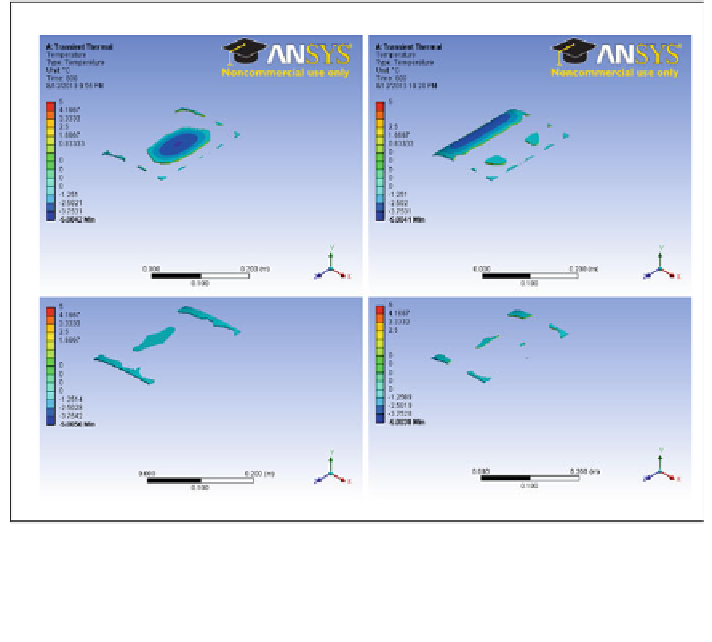Environmental Engineering Reference
In-Depth Information
Aligned
Staggered
(a)
(b)
(c)
(d)
t = 600 sec
Fig. 8.22
Ice residue for different layouts at t = 600 s after switching on the resistors with an
q = 400 W/m
2
.
m
3
.
V
ice
¼
3
:
46
10
5
input
heat
flux
of
a
Aligned
square
layout
with
m
3
.
b
Staggered
square
layout
with
V
ice
¼
4
:
57
10
5
c
Aligned
circular
layout
with
V
ice
¼
1
:
58
10
5
m
3
. d Staggered circular layout with V
ice
¼
8
:
1
10
6
m
3
hexagonal) were investigated and it was observed that their de-icing performance
cost value J is between the performance costs of the square and circular heaters in
Table
8.2
.
Besides minimizing the total de-icing time and improving ice melting efficiency
in the leading edge area, decreasing the amount of applied thermal stress is another
important factor to be considered in the design of distributed active de-icing
systems. Our calculations show that aligned layouts induce higher thermal stress
than staggered layouts, which result in higher maximum temperatures and larger
areas with higher temperature on the blade. This observation is more subtle due to
the partial absorption of the generated heat flux in the upper surface of the blade by
the ice layer. In summary, in the case of using aligned heaters for de-icing, more
careful considerations are needed in the selection of closed-loop control gains to
avoid high thermal stress induction to the blade structure. Clearly, having reliable
and accurate on-the-blade optical sensing prevents this high thermal stress
induction by switching off those resistors near the regions where ice does not exist.

